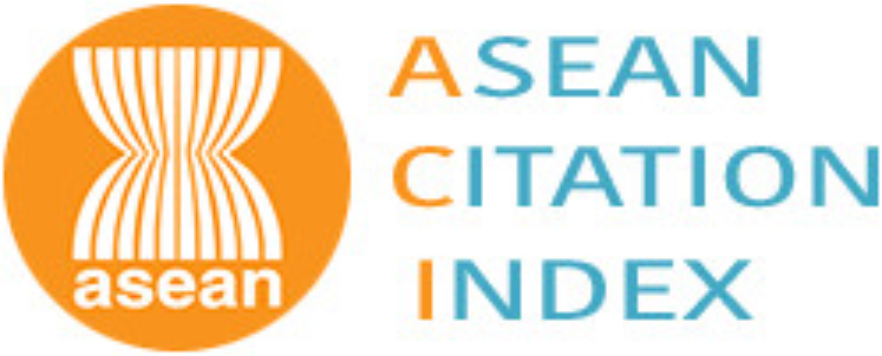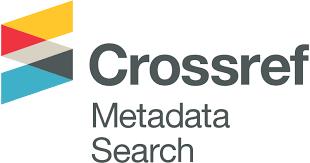Mô phỏng kéo màng vật liệu hai chiều đa nguyên tử cấu trúc nếp gấp
Email:
nguyenhuutu160382@gmail.com
Từ khóa:
Vật liệu hai chiều, cơ tính, Stillinger-Weber
Tóm tắt
Vật liệu hai chiều có nhiều tính chất đặc biệt như dẫn nhiệt, dẫn điện tốt, nên được ứng dụng trong các lĩnh vực như: y tế, năng lượng, điện tử... Bài báo nghiên cứu cơ tính của 6 vật liệu hai chiều cấu trúc nếp gấp bao gồm: p-SiS, p-SiSe, p-GeS, p-GeSe, p-CSe, và p-CTe. Phương pháp phần tử hữu hạn nguyên tử với hàm thế Stillinger-Webber được sử dụng để mô phỏng tương tác giữa các nguyên tử trong quá trình kéo các màng của 6 vật liệu nêu trên. Kết quả xác định được: mô đun đàn hồi hai chiều của nhóm vật liệu này trong khoảng từ 10,6 đến 89,1 N/m; hệ số Possion trong khoảng từ -0,11 đến 0,42; ứng suất hai chiều lớn nhất trong khoảng từ 2,3 đến 9,4 N/m và biến dạng kéo đứt từ 20% đến 43%. Kết quả cho thấy các vật liệu này có tính dị hướng cao, đồng thời là cơ sở để ứng dụng chúng trong thực tế.Tài liệu tham khảo
[1]. A.K. Geim, Graphene: status and prospects. Science, 324 (2009) 1530-1534. https://www.science.org/doi/10.1126/science.1158877
[2]. A. Pakdel, Z. Chunyi, B. Yoshio, G. Dmitri, Low-dimensional boron nitride nanomaterials, Materials Today, 15 (2012) 256–265. https://doi.org/10.1016/S1369-7021(12)70116-5.
[3]. P. Tsipas, S. Kassavetis, D. Tsoutsou, E. Xenogiannopoulou, E. Golias, S. A. Giamini, C. Grazianetti, D. Chiappe, A. Molle, M. Fanciulli, A. Dimoulas, Evidence for graphite-like hexagonal AlN nanosheets epitaxially grown on single crystal Ag(111), Applied Physics Letters, 103 (2013) 251605. https://doi.org/10.1063/1.4851239
[4]. V. Mansurov, T. V. Malin, Yu. G. Galitsyn, K. S. Zhuravlev, Graphene-like AlN layer formation on (111) Si surface by ammonia molecular beam epitaxy, Journal of Crystal Growth, 428 (2015) 93-97. https://doi.org/10.1016/j.jcrysgro.2015.07.030
[5]. T. Malin, V. G. Mansurov, Y.Galitsyn, K. S. Zhuravlev, 2D AlN crystal phase formation on (0001) Al2O3 surface by ammonia MBE, Physica status solidi c, 12 (2015) 443-446. https://doi.org/10.1002/pssc.201400168
[6]. B. Aufray, A. Kara, S. Vizzini, H. Oughaddou, C. Léandri, B. Ealet, G. L. Lay, Graphene-like silicon nanoribbons on Ag (110): A possible formation of silicene, Applied Physics Letters, 96 (2010) 183102-183102. https://doi.org/10.1063/1.3419932
[7]. P.D. Padova C. Quaresima, C. Ottaviani, P.M. Sheverdyaeva, C. Carbone, D. Topwal, B. Oliveieri, A. Kara, H. Oughaddou, B. Aufray, G. L. Lay, Evidence of graphene-like electronic signature in silicene nanoribbons, Applied Physics Letters, 96 (2010) 261905-261908. https://doi.org/10.1063/1.3459143
[8]. L. Meng, Yeliang Wang, Lizhi Zhang, Shixuan Du, Buckled silicene formation on Ir (111), Nano letters, 13 (2013) 685-690. https://doi.org/10.1021/nl304347w
[9]. Z. Zhu, D. Tomanek, Semiconducting Layered Blue Phosphorus: A Computational Study, Physical review letters, 112 (2014) 176802-176807. https://doi.org/10.1103/PhysRevLett.112.176802
]10].K. Chinnathambi, A. Chakrabarti, M. Ezawa, Direct Band Gaps in Group IV-VI Monolayer Materials: Binary Counterparts of Phosphorene. Physical Review B, 93 (2015) 125428-125441. https://doi.org/10.1103/PhysRevB.93.125428
[11]. L. Miaomiao, Taojian Fan, Yun Zhou, Han Zhang, Lin Mei, 2D Black Phosphorus–Based Biomedical Applications, Advanced Functional Materials, 29 (2019) 1808306. https://doi.org/10.1002/adfm.201808306
[12]. H. Jiang, T. S. Zhao, Yuxun Ren, Zhang Ruihan, Ab initio prediction and characterization of phosphorene-like SiS and SiSe as anode materials for sodium-ion batteries, Science Bulletin, 62 (2017) 572-578. https://doi.org/10.1016/j.scib.2017.03.026
[13]. A. Sarkar, E. Stratakis, Recent Advances in 2D Metal Monochalcogenides, Advanced Science, 7 (2020) 2001655. https://doi.org/10.1002/advs.202001655
[14]. B. Liu, ying-sheng Huang, Hanqing Jiang, Shaojian Qu, The atomic-scale finite element method. Computer methods in applied mechanics and engineering, 193 (2004) 1849-1864. https://doi.org/10.1016/j.cma.2003.12.037
[15]. W. Youqi, C. Zhang, E. Zhou, C. Sun, J. Hinkley, T. S. Gates, J. Su, Atomistic finite elements applicable to solid polymers, Computational materials science, 36 (2006) 292-302. https://doi.org/10.1016/j.commatsci.2005.03.016
[16]. J. Wackerfu, Molecular mechanics in the context of the finite element method, International Journal for Numerical Methods in Engineering, 77 (2009) 969-997. https://doi.org/10.1002/nme.2442
[17]. L. Nasdala, A. Kempe, R. Rolfes, The molecular dynamic finite element method (MDFEM), Computers Materials and Continua, 19 (2010) 57-104. https://10.3970/cmc.2010.019.057
[18]. F.H. Stillinger, T.A. Weber, Computer simulation of local order in condensed phases of silicon, Physical review B, 31(1985) 5262-5271. https://doi.org/10.1103/PhysRevB.31.5262
[19]. J.Tersoff, Modeling solid-state chemistry: Interatomic potentials for multicomponent systems, Physical Review B, 39 (1989) 5566-5568. https://doi.org/10.1103/PhysRevB.39.5566
[20]. Nguyen Danh Truong, Minh Quy Le, Tham Lam Bui, Hai Le Bui, Atomistic simulation of free transverse vibration of graphene, hexagonal SiC, and BN nanosheets. Acta Mechanica Sinica, 33 (2016) 132-147. https://10.1007/s10409-016-0613-z
[21]. J.-W. Jiang, Y.-P. Zhou, Handbook of Stillinger-Weber Potential Parameters for Two-Dimensional Atomic Crystals, InTech, 2017.
[22]. M.-Q. Le, Mode-I stress intensity factor in single layer graphene sheets, Computational Materials Science, 118 (2016) 251-258. https://doi.org/10.1016/j.commatsci.2016.03.027
[23]. F. Hao, X. Chen, First-principles study of the defected phosphorene under tensile strain, Journal of Applied Physics, 120 (2016) 1063-1073 . https://doi.org/10.1063/1.4966167
[2]. A. Pakdel, Z. Chunyi, B. Yoshio, G. Dmitri, Low-dimensional boron nitride nanomaterials, Materials Today, 15 (2012) 256–265. https://doi.org/10.1016/S1369-7021(12)70116-5.
[3]. P. Tsipas, S. Kassavetis, D. Tsoutsou, E. Xenogiannopoulou, E. Golias, S. A. Giamini, C. Grazianetti, D. Chiappe, A. Molle, M. Fanciulli, A. Dimoulas, Evidence for graphite-like hexagonal AlN nanosheets epitaxially grown on single crystal Ag(111), Applied Physics Letters, 103 (2013) 251605. https://doi.org/10.1063/1.4851239
[4]. V. Mansurov, T. V. Malin, Yu. G. Galitsyn, K. S. Zhuravlev, Graphene-like AlN layer formation on (111) Si surface by ammonia molecular beam epitaxy, Journal of Crystal Growth, 428 (2015) 93-97. https://doi.org/10.1016/j.jcrysgro.2015.07.030
[5]. T. Malin, V. G. Mansurov, Y.Galitsyn, K. S. Zhuravlev, 2D AlN crystal phase formation on (0001) Al2O3 surface by ammonia MBE, Physica status solidi c, 12 (2015) 443-446. https://doi.org/10.1002/pssc.201400168
[6]. B. Aufray, A. Kara, S. Vizzini, H. Oughaddou, C. Léandri, B. Ealet, G. L. Lay, Graphene-like silicon nanoribbons on Ag (110): A possible formation of silicene, Applied Physics Letters, 96 (2010) 183102-183102. https://doi.org/10.1063/1.3419932
[7]. P.D. Padova C. Quaresima, C. Ottaviani, P.M. Sheverdyaeva, C. Carbone, D. Topwal, B. Oliveieri, A. Kara, H. Oughaddou, B. Aufray, G. L. Lay, Evidence of graphene-like electronic signature in silicene nanoribbons, Applied Physics Letters, 96 (2010) 261905-261908. https://doi.org/10.1063/1.3459143
[8]. L. Meng, Yeliang Wang, Lizhi Zhang, Shixuan Du, Buckled silicene formation on Ir (111), Nano letters, 13 (2013) 685-690. https://doi.org/10.1021/nl304347w
[9]. Z. Zhu, D. Tomanek, Semiconducting Layered Blue Phosphorus: A Computational Study, Physical review letters, 112 (2014) 176802-176807. https://doi.org/10.1103/PhysRevLett.112.176802
]10].K. Chinnathambi, A. Chakrabarti, M. Ezawa, Direct Band Gaps in Group IV-VI Monolayer Materials: Binary Counterparts of Phosphorene. Physical Review B, 93 (2015) 125428-125441. https://doi.org/10.1103/PhysRevB.93.125428
[11]. L. Miaomiao, Taojian Fan, Yun Zhou, Han Zhang, Lin Mei, 2D Black Phosphorus–Based Biomedical Applications, Advanced Functional Materials, 29 (2019) 1808306. https://doi.org/10.1002/adfm.201808306
[12]. H. Jiang, T. S. Zhao, Yuxun Ren, Zhang Ruihan, Ab initio prediction and characterization of phosphorene-like SiS and SiSe as anode materials for sodium-ion batteries, Science Bulletin, 62 (2017) 572-578. https://doi.org/10.1016/j.scib.2017.03.026
[13]. A. Sarkar, E. Stratakis, Recent Advances in 2D Metal Monochalcogenides, Advanced Science, 7 (2020) 2001655. https://doi.org/10.1002/advs.202001655
[14]. B. Liu, ying-sheng Huang, Hanqing Jiang, Shaojian Qu, The atomic-scale finite element method. Computer methods in applied mechanics and engineering, 193 (2004) 1849-1864. https://doi.org/10.1016/j.cma.2003.12.037
[15]. W. Youqi, C. Zhang, E. Zhou, C. Sun, J. Hinkley, T. S. Gates, J. Su, Atomistic finite elements applicable to solid polymers, Computational materials science, 36 (2006) 292-302. https://doi.org/10.1016/j.commatsci.2005.03.016
[16]. J. Wackerfu, Molecular mechanics in the context of the finite element method, International Journal for Numerical Methods in Engineering, 77 (2009) 969-997. https://doi.org/10.1002/nme.2442
[17]. L. Nasdala, A. Kempe, R. Rolfes, The molecular dynamic finite element method (MDFEM), Computers Materials and Continua, 19 (2010) 57-104. https://10.3970/cmc.2010.019.057
[18]. F.H. Stillinger, T.A. Weber, Computer simulation of local order in condensed phases of silicon, Physical review B, 31(1985) 5262-5271. https://doi.org/10.1103/PhysRevB.31.5262
[19]. J.Tersoff, Modeling solid-state chemistry: Interatomic potentials for multicomponent systems, Physical Review B, 39 (1989) 5566-5568. https://doi.org/10.1103/PhysRevB.39.5566
[20]. Nguyen Danh Truong, Minh Quy Le, Tham Lam Bui, Hai Le Bui, Atomistic simulation of free transverse vibration of graphene, hexagonal SiC, and BN nanosheets. Acta Mechanica Sinica, 33 (2016) 132-147. https://10.1007/s10409-016-0613-z
[21]. J.-W. Jiang, Y.-P. Zhou, Handbook of Stillinger-Weber Potential Parameters for Two-Dimensional Atomic Crystals, InTech, 2017.
[22]. M.-Q. Le, Mode-I stress intensity factor in single layer graphene sheets, Computational Materials Science, 118 (2016) 251-258. https://doi.org/10.1016/j.commatsci.2016.03.027
[23]. F. Hao, X. Chen, First-principles study of the defected phosphorene under tensile strain, Journal of Applied Physics, 120 (2016) 1063-1073 . https://doi.org/10.1063/1.4966167
Tải xuống
Chưa có dữ liệu thống kê

Nhận bài
28/01/2022
Nhận bài sửa
04/04/2022
Chấp nhận đăng
08/06/2022
Xuất bản
15/06/2022
Chuyên mục
Công trình khoa học
Kiểu trích dẫn
Lê Minh, Q., Nguyễn Hữu, T., Đỗ Thị Kim, L., & Nguyễn Văn, T. (1655226000). Mô phỏng kéo màng vật liệu hai chiều đa nguyên tử cấu trúc nếp gấp. Tạp Chí Khoa Học Giao Thông Vận Tải, 73(5), 514-526. https://doi.org/10.47869/tcsj.73.5.6
Số lần xem tóm tắt
272
Số lần xem bài báo
201









